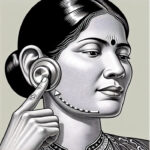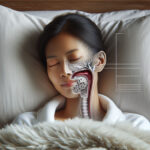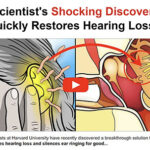This 30 Second Technique is Shockingly Effective
Combatting Eustachian Tube Dysfunction Tinnitus: Expert Tips for Managing Symptoms

Expert Insights on Alleviating Tinnitus Due to Eustachian Tube Dysfunction: Symptom Management Techniques
Understanding the Connection Between Eustachian Tube Dysfunction and Tinnitus
What is Eustachian Tube Dysfunction?
The Eustachian tube, connecting the middle ear to the back of the nose, may not function correctly, known as Eustachian Tube Dysfunction (ETD). This vital structure helps balance ear pressure and drain fluid. Malfunctions can lead to muffled hearing, pain, and a sensation of ear fullness. The discomfort experienced during altitude changes, like flying or diving, is often due to the Eustachian tube's pressure regulation efforts.
How Eustachian Tube Dysfunction Can Lead to Tinnitus
ETD can sometimes be the culprit behind tinnitus, which manifests as persistent phantom sounds such as ringing or humming. When the Eustachian tube is disrupted, it may cause an abnormal pressure differential, potentially leading to auditory issues including tinnitus. While tinnitus linked to ETD is usually temporary, for some, it becomes a chronic condition, severely affecting their well-being.
Impact of ETD on Daily Life
Dealing with ETD-related tinnitus can be challenging. The relentless noise can hamper concentration, disrupt sleep, and even lead to social withdrawal or depression. The discomfort from ear pressure might make even simple tasks feel overwhelming. Furthermore, the unpredictable nature of symptom emergence adds to the stress and strain on daily life. The repercussions extend beyond the physical, as the emotional and mental tolls are equally significant.
Accurate Diagnosis of ETD-Related Tinnitus
Identifying Symptoms of ETD-Induced Tinnitus
Recognizing early signs of ETD-induced tinnitus is essential for timely and effective treatment. Common symptoms include the characteristic ringing, reduced hearing, ear fullness, and discomfort. Observing a clicking sound when swallowing or yawning, which are actions that usually help the Eustachian tube function, is a clear indicator. Documenting these symptoms and their impact on your life is vital for communicating the seriousness of your condition to healthcare professionals.
The Importance of Hearing Evaluations
Detailed hearing assessments are fundamental to diagnosing tinnitus associated with ETD. An audiologist will carry out tests such as pure-tone audiometry, assessing hearing acuity at various pitches and volumes, and tympanometry, which tests the middle ear's response to pressure variations. These tests help determine if the tinnitus is due to ETD or another underlying issue.
Detailed Imaging for Assessing the Eustachian Tube
In some cases, advanced imaging, like MRI or CT scans, are employed for a comprehensive view of the Eustachian tube and surrounding areas. This is particularly useful in identifying any structural irregularities or blockages that may contribute to dysfunction. Such imaging is crucial for doctors to formulate a precise and effective treatment plan, especially if surgery is a consideration.
Lifestyle Modifications to Ease Symptoms
Hydration and Humidity's Role
Simple yet effective measures like maintaining a humid environment and staying hydrated can help lessen ETD tinnitus symptoms. Dry conditions can lead to thicker nasal mucus, which can interfere with Eustachian tube function. Using a humidifier can be beneficial in such situations. Adequate fluid intake helps keep mucus at the right consistency, reducing blockage risks. These lifestyle tweaks can significantly reduce the occurrence and intensity of tinnitus episodes.
Diet's Effect on Eustachian Tube Function
What you eat can influence Eustachian tube health. Dairy may increase mucus production, possibly exacerbating ETD symptoms. Conversely, an anti-inflammatory diet could reduce inflammation in the nasal and Eustachian tubes. Adding leafy greens, berries, and omega-3-rich fish to your diet could be beneficial. However, it's best to consult with a nutrition expert or healthcare provider before making significant dietary changes.
Stress Management Techniques
Since stress can worsen tinnitus, incorporating stress-reduction practices into your regimen can be beneficial. Mindfulness, meditation, and yoga are excellent for stress management. Regular exercise also promotes endorphin release, which helps counter stress. Engaging in enjoyable activities can divert attention from tinnitus and improve overall well-being. Addressing stress is about both immediate relief and cultivating a healthier, sustainable approach to living with symptoms.
Medicinal and Non-Surgical Interventions
Nasal Decongestants and Steroids: Benefits and Considerations
Nasal decongestants and steroids may offer temporary relief from ETD symptoms. Decongestants reduce swelling in the nasal passages, potentially easing Eustachian tube blockages. Steroids can reduce inflammation. However, decongestants might cause rebound congestion if overused, and steroids have potential side effects with long-term use. These medications should be taken under medical supervision.
Self-Inflation Techniques for Eustachian Tube Dysfunction
Self-inflation aims to open the Eustachian tube by increasing nasal pressure. This involves taking a deep breath, pinching the nostrils, and gently exhaling with the mouth closed. This can help equalize pressure and relieve symptoms. Special devices may assist those who find the technique challenging. Before trying self-inflation, consult an ENT specialist to ensure it's appropriate and safe for you.
Managing Allergies to Diminish Symptoms
For those with ETD tinnitus, managing allergies can greatly reduce symptoms. Allergies can lead to inflammation and congestion in the nasal and Eustachian tubes. A combination of allergy medications and immunotherapy can help control allergies. Avoiding known allergens and keeping your living space free from dust and pet dander can also aid symptom management.
Surgical Solutions for Persistent Eustachian Tube Dysfunction Tinnitus
Myringotomy and Ventilation Tubes
If non-surgical methods don't provide relief, surgery may be an option. Myringotomy involves creating a small opening in the eardrum to allow fluid drainage and pressure equalization. Sometimes, a tiny tube is inserted to keep the opening and offer continuous relief. Though usually temporary, these tubes may need to be replaced or removed eventually.
Exploring Balloon Eustachian Tuboplasty
Balloon Eustachian Tuboplasty, a newer surgical approach, involves dilating the Eustachian tube with an inflated balloon to improve function. This less invasive surgery has shown promise for those with chronic ETD. It's especially suited for individuals who haven't benefited from other treatments and is performed under general anesthesia.
Assessing Eustachian Tube Surgery Risks and Benefits
While surgery can bring relief to chronic ETD tinnitus sufferers, it's important to weigh potential risks, such as infection or eardrum perforation, against possible improvements in hearing and reduced tinnitus. Discuss the procedure, expected outcomes, and recovery process thoroughly with your ENT doctor to make an informed decision.
Integrative Approaches and Whole-Body Wellness
Acupuncture's Role in Tinnitus Relief
Acupuncture, rooted in traditional Chinese medicine, is known for addressing various health conditions, including tinnitus. It aims to restore body balance and reduce symptoms by targeting specific points. Some ETD tinnitus sufferers report symptom relief following acupuncture sessions. Nonetheless, always consult a certified practitioner before engaging in this or any alternative treatment.
Herbal Treatments: Evaluating Benefits and Risks
Herbal supplements are often touted as natural tinnitus remedies. However, they may interact with medications or cause side effects. Always discuss the use of herbal treatments with a healthcare provider to ensure they're safe and appropriate for you.
Chiropractic Care for Eustachian Tube Dysfunction
Chiropractic treatments may help some people with ETD tinnitus. By focusing on the musculoskeletal system, chiropractors could potentially improve Eustachian tube function by easing related tension in the neck and jaw. Although evidence supporting chiropractic effectiveness for ETD tinnitus is limited, patients have reported symptom improvement after treatments.
Emotional Support and Community Connection
Using Cognitive Behavioral Therapy to Cope with Tinnitus
Cognitive Behavioral Therapy (CBT) is a psychological approach that helps individuals deal with tinnitus distress. It provides strategies to change negative thought patterns and behaviors associated with tinnitus, potentially lessening its impact on one's life. Many patients have found CBT useful in managing their responses to tinnitus and improving their quality of life.
The Positive Impact of Support Groups and Community Involvement
Support groups offer a space for individuals affected by ETD tinnitus to share experiences and strategies. Connecting with others who understand your challenges can provide emotional comfort and practical tips. Additionally, community resources like educational events and informational materials can be valuable for managing the condition and empowering yourself on your symptom management journey.
Seeking Expertise from an ENT Specialist
If you experience persistent ETD tinnitus symptoms, consulting an Ear, Nose, and Throat (ENT) specialist is essential. They can perform a thorough evaluation, recommend appropriate treatments, and guide you through managing your condition. An ENT doctor can also determine if other issues are exacerbating your symptoms and address them accordingly.
Future Directions: Advances in Treatment and Research
Emerging Therapies for Eustachian Tube Dysfunction Tinnitus
The field of otolaryngology is constantly evolving, with new treatments for ETD tinnitus being developed. Innovations and deeper understanding of the condition are leading to more effective and lasting relief. Staying informed about these advancements is important for patients and healthcare providers alike.
The Essential Role of Ongoing Research and Clinical Trials
Continued research and clinical trials are the foundations of medical progress, providing critical data on the safety and effectiveness of new treatments. Participating in clinical trials can give patients access to cutting-edge therapies not widely available. If you're interested in contributing to the advancement of ETD tinnitus treatments, consider joining a clinical trial.
How Patient Advocacy Drives Research Forward
Patient advocacy plays a vital role in advancing research and improving care for ETD tinnitus patients. Sharing your experiences, advocating for research funding, and raising awareness can significantly influence the scientific community's understanding of the condition. Your involvement is key, potentially leading to better outcomes for yourself and others with ETD tinnitus.

Laura Henderson is a health enthusiast and has been interested in healthy and natural methods of eliminating tinnitus and restoring natural hearing for many years.










